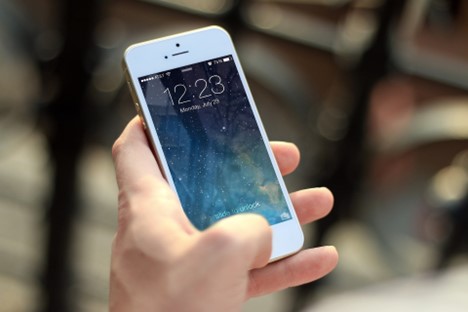
If there’s one thing you can never forget to bring with you wherever you go, it’s your mobile phone. We live in an age where technology drives our lives and we always bring a piece of it with us in the form of a smartphone.
Whenever we’re searching for a new restaurant to try around town or finding directions to get to a certain location, doing a quick search should instantly give you access to that information. If you need to know more about a person, a place, a business, or a topic, you can get access to millions of informative sources online with the tap of a finger.
This is the level of convenience mobile phones are able to provide in our day-to-day lives. We can access information, connect with people, and communicate in real-time regardless of where we are in the world thanks to this revolutionary piece of technology.
But of course, like all good things, using it comes at a cost. Apart from what you pay upfront to acquire a mobile phone unit, you also have recurring or monthly costs to consider for using it. Sending texts, making calls, and accessing the internet are all mobile services that you pay for in order to use (read more).
Fortunately, gone were the days when you had to pay for every single text you sent out or every minute you consume calling someone. Even internet access is much more affordable these days and it’s all thanks to the rise of mobile subscription services.
What Are Mobile Subscription Services?
As mentioned above, in order to use your mobile phone’s core functions such as sending texts, making calls, and/or accessing the internet, you need to pay a certain fee associated with their use. Depending on your provider, these fees may vary but it’s safe to say that they’re generally made affordable so that more people have access to such mobile services. However, even these seemingly small costs can add up easily if you’re not careful enough.
So, in order to make mobile services even more affordable and accessible to many, service providers have created subscription packages where users only have to pay a set amount per month in order to avail a range of services included in their package offers. These packages either have unlimited or a generous amount of text and call credits and a data allowance that can typically last a user the whole month when used according to the recommended daily allocation.
Most users would agree that signing up for a subscription package is the most practical choice when it comes to availing mobile services. It’s cheap, consistent, and predictable; you don’t have to worry about fluctuating costs per month unless you do something outside of your usual routine (i.e. traveling out of the country or calling someone internationally). Plus, you can also grab exclusive deals that are only available to users who sign up or are already using a subscription service.
In Norway, there are three leading companies or networks that offer mobile services: Telenor, Telia, and Ice. All of them are Nkom approved and generally offer a good range of subscription packages that can fit different types of lifestyles. At the end of the day, it all comes down to what subscription offers best suits you based on your individual needs.
Below, we’ve listed four considerations that you should keep in mind when searching for the best subscription service for you:
Top 4 Considerations if You’re Planning to Buy a Subscription Service
Speed
One of the first things you need to consider is how fast your internet speed to be. Most subscription packages are bundled with data plans that have different upload and download speeds. Depending on what you intend to use your internet for on a daily basis, you should look for a service that can meet your needs. For example, if you don’t see yourself using the internet very often on your phone or if you just need it for recreational purposes such as web surfing, social media, and mobile games, then a subscription plan with average internet speeds will suffice. If you have tasks that are more internet-heavy such as doing livestreams, video call conferences, and similar activities, then opting for a high-speed subscription plan is most ideal for you.
Coverage

Next is coverage or Dekningskart. This refers to the range your chosen network covers. Each of the three biggest networks in Norway has a coverage map that shows users where they have basic, good, and excellent dekningskart mobil, which is an important factor to consider when choosing a network because it will affect your overall experience with your subscription plan. By studying each of the networks’ coverage maps, you can determine which network performs best in your area or location and make your buying decision based on that information.
Apart from your home address, you should take into account your line of work as well. If your job involves a lot of travelling or business trips, you should also check the connectivity status of other areas you frequent for work. Choosing a network that has good coverage in areas that you frequently visit for work purposes is a huge plus as well.
Price
Next, you also have to consider the price. Of course, getting the best offer with optimal coverage is a must but you also have to make sure that it works for your budget too. It will defeat the purpose of getting on a subscription plan to save on mobile service costs if you end up choosing a subscription plan that is way beyond what your monthly budget allows. Fortunately, most plans these days are customizable so you can add or omit certain services from your package to manage your total subscription costs per month. When choosing a service provider, finding a company that offers you this type of flexibility is ideal.
Binding Period
Lastly, we have the binding period that often comes with subscription plans. While subscription plans tend to offer cheaper rates for mobile phone services such as text or call credits and data usage, they can also be particular about customer loyalty, so they look for customers who plan to avail of their services for longer periods of time. In other words, in exchange for cheaper rates, they hope to do business with you for longer. Thus, binding periods are often part of the deal when you sign up for a mobile subscription package.
Binding periods often last for 12 or 24 months depending on your agreement with the company, with the option to renew the service if you wish to continue availing their services. When choosing a plan, it’s important to take binding periods into consideration as well. Only sign up when you feel comfortable making the monthly payments for the entire duration of the binding period.
What Happens if I Don’t Sign Up for a Subscription Service?
Well, there’s always the option to pay for mobile phone services only when you use them, aka “pay per use.” However, the rates of prepaid services are often higher than the rates offered in subscription plans so it really depends on the frequency at which you’ll be using such services that will decide whether it would be more practical for you to sign up for a subscription plan or not.





